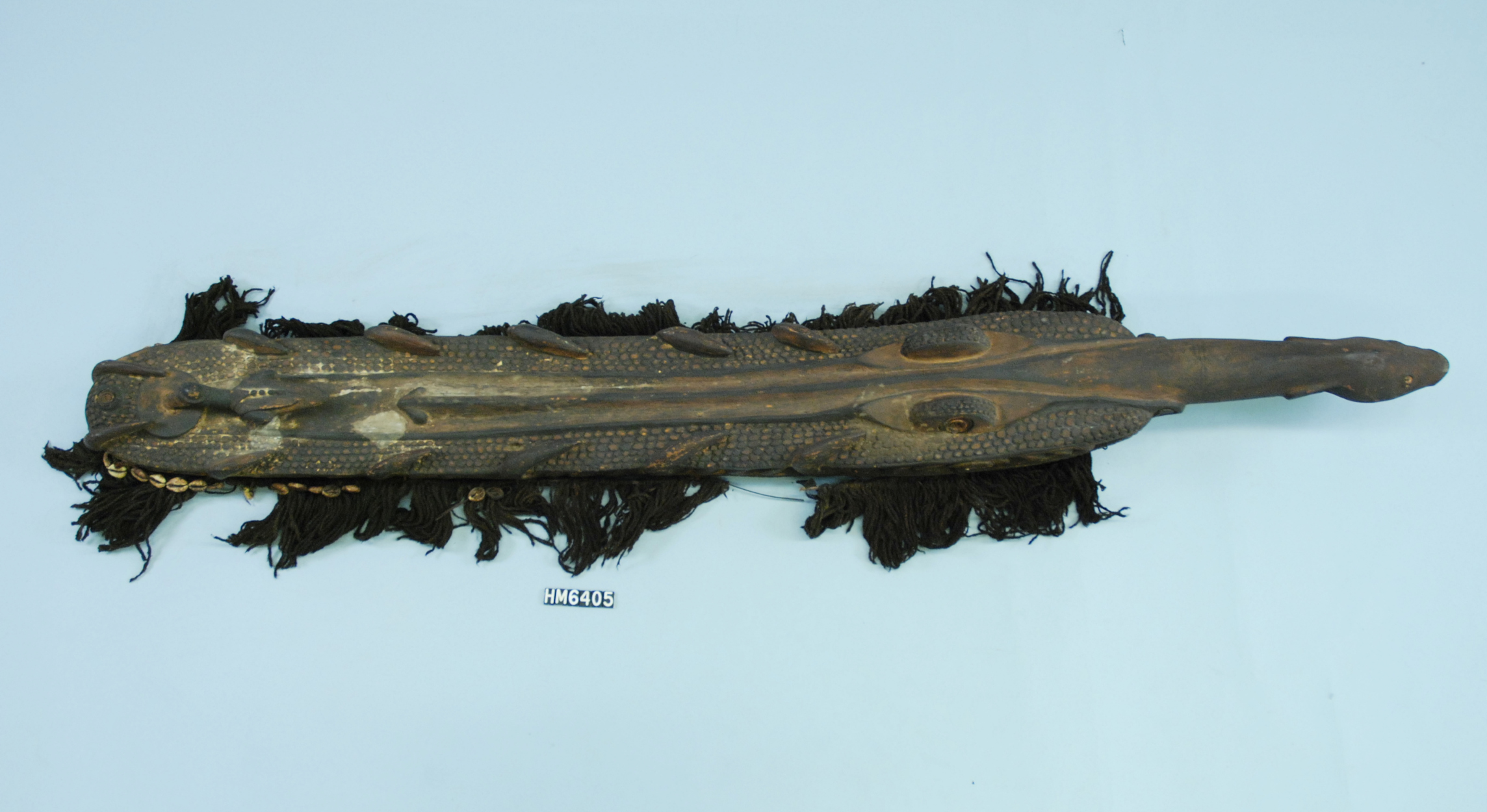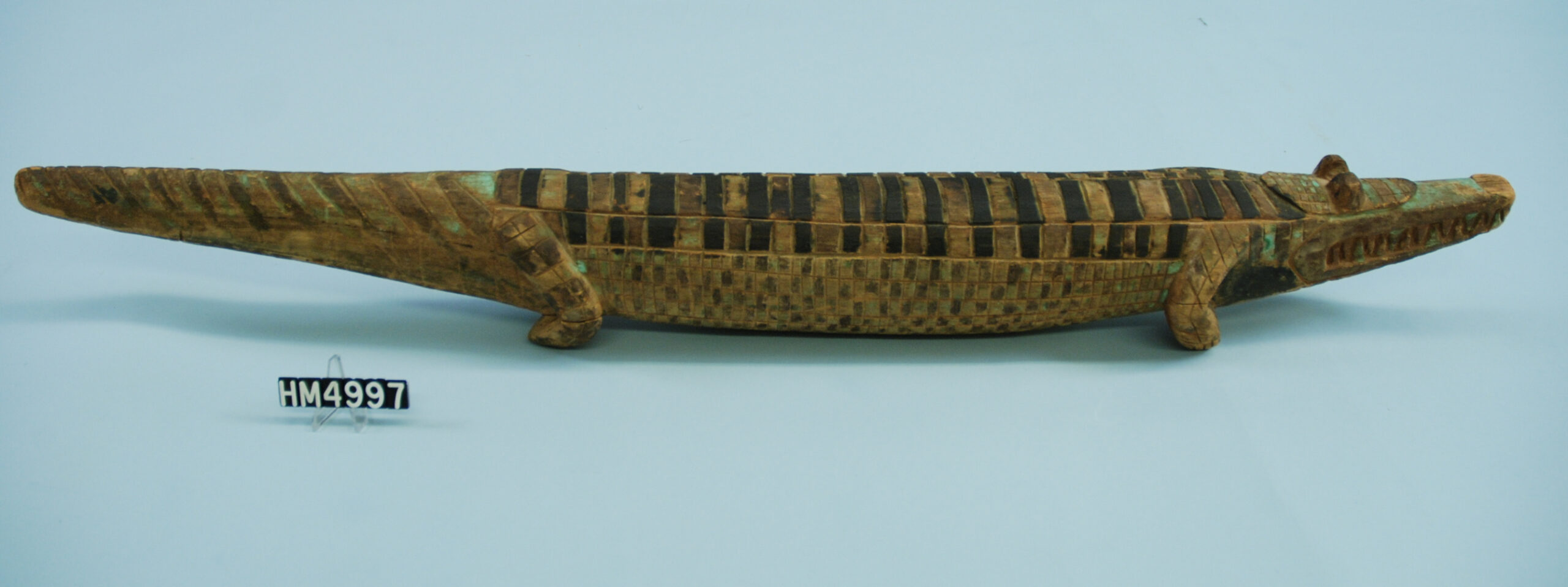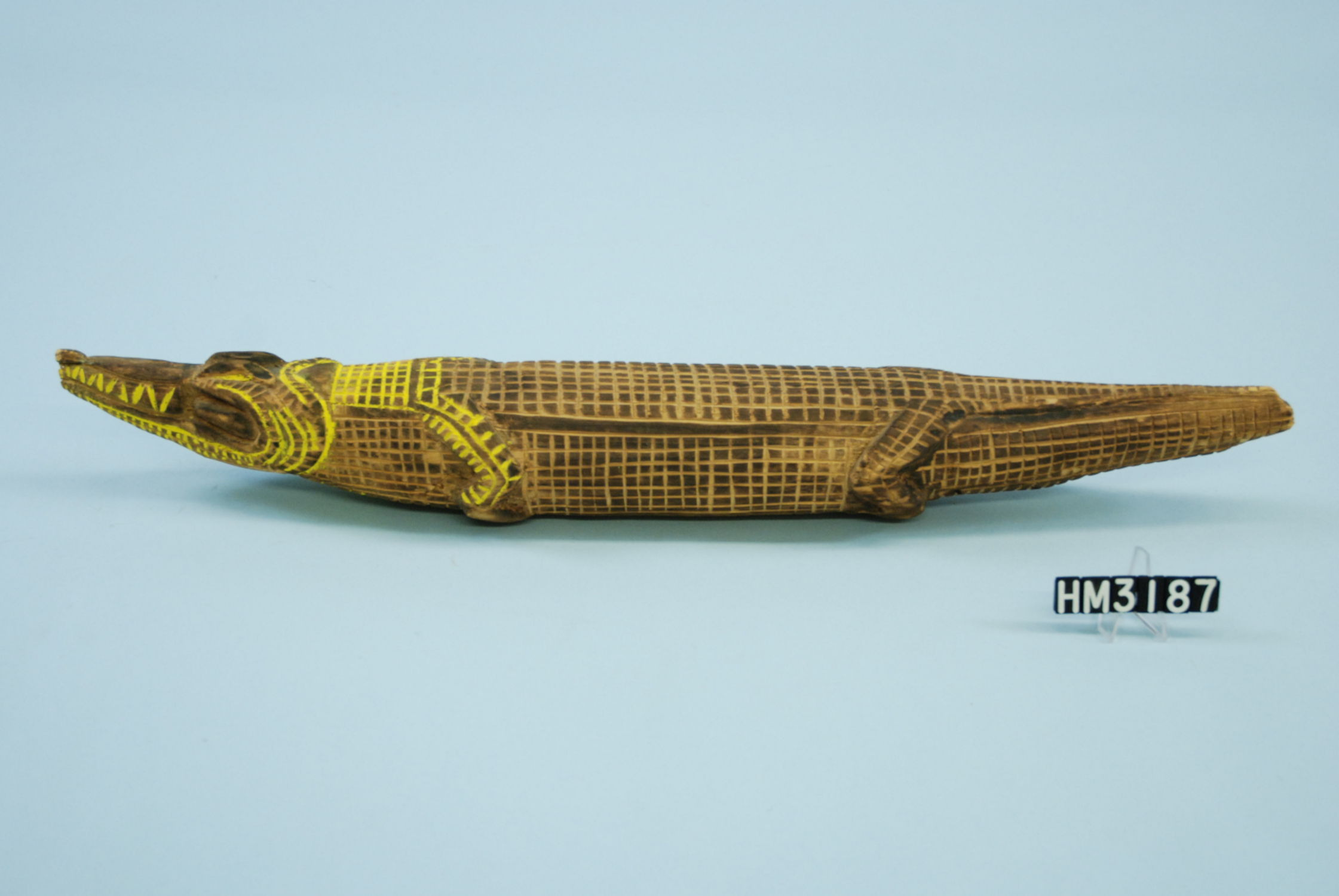Hudson Museum Scavenger Hunt: Iatmul Crocodile
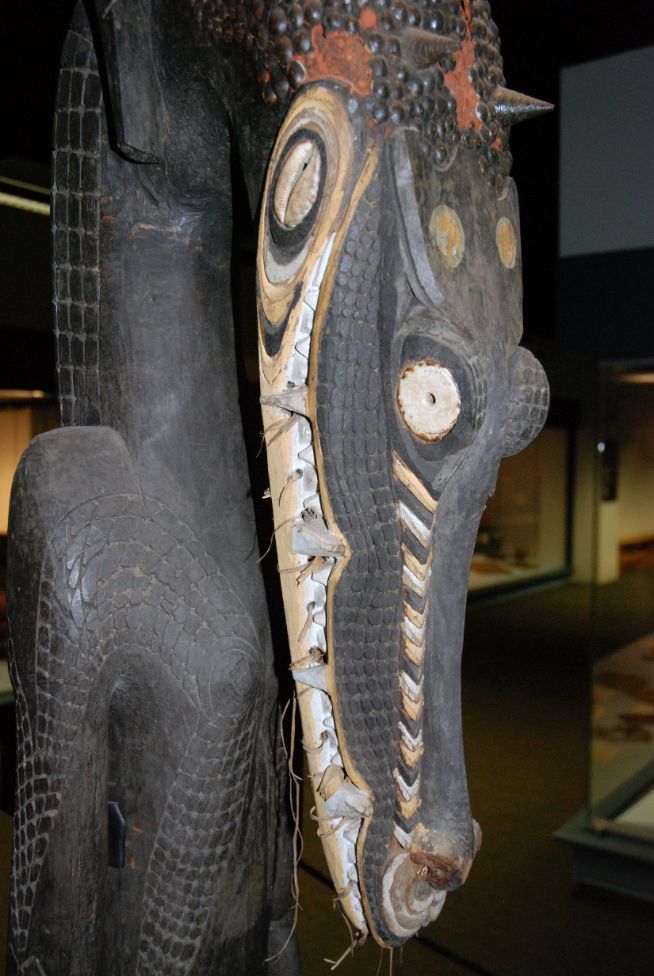
Where did it come from?
This carved wooden figure originally came from Iatmul in the East Sepik Province of Papua New Guinea.
This piece also features a canoe shield with a monkey.
What was it made of?
This crocodile figure was carved from one piece of wood and then decorated with cassowary bird feathers, shells, mud, and hand woven bands.
The Sepik people say that “a tree shows itself to the carver” and the carver works to release the design of the piece from the wood.
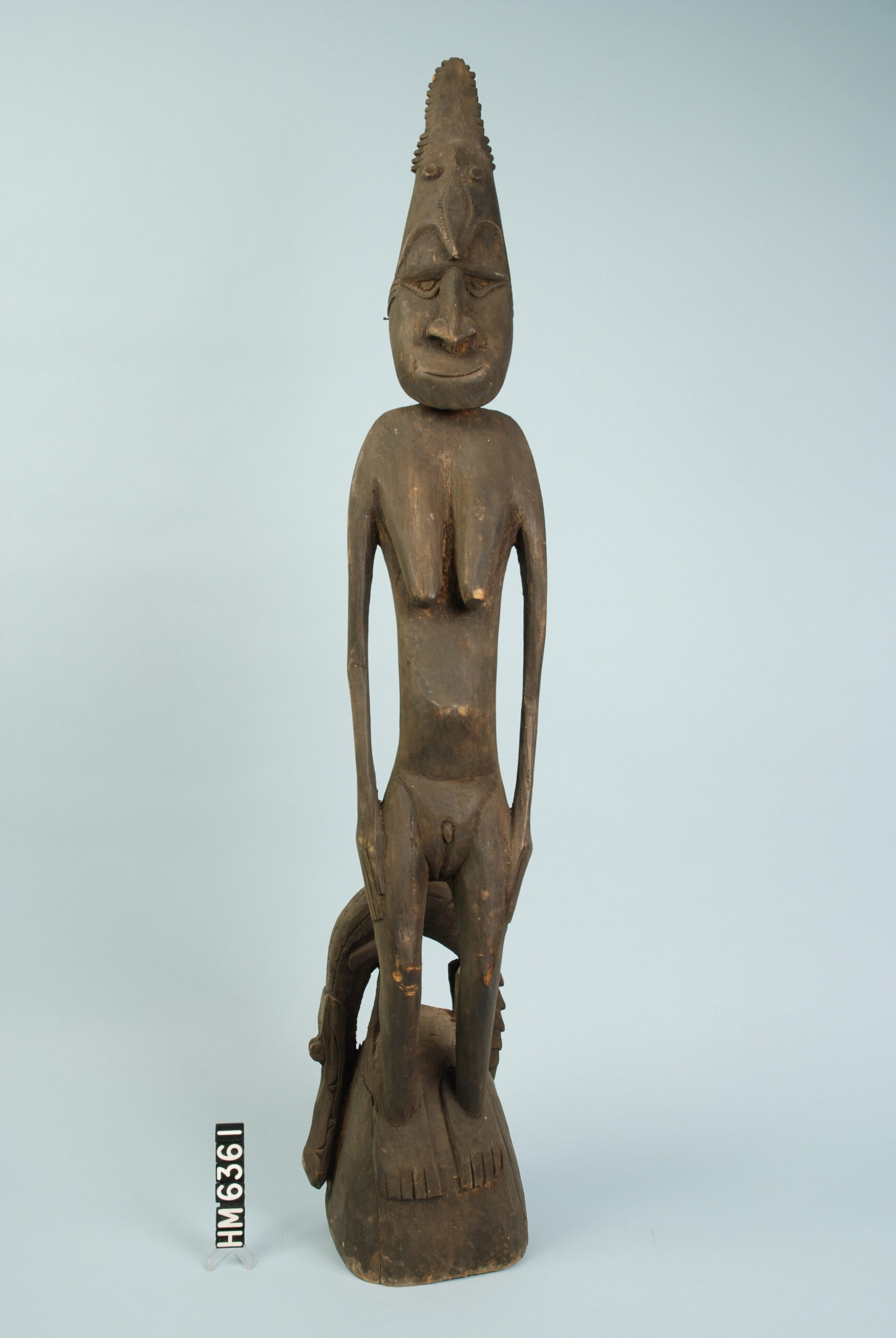
What were they used for?
Sepik art served many functions. Some pieces were used for ritual purposes; other items were created specifically for sale outside the community.
Crocodiles were seen as channels that were used to interact with the physical and spiritual world. They were both spirits themselves, and a medium of interacting with spirits.
Other Crocodiles:
Fewer than a dozen crocodile figures like the one before you are permanently in museums worldwide, the majority being in museums in Europe, though they are often loaned from Papua New Guinea National Museum and Art Gallery for temporary exhibitions
Congratulations!
You have completed the Hudson Museum Scavenger Hunt! Please enjoy the rest of the Museum and be sure to check back soon for new exhibits.

